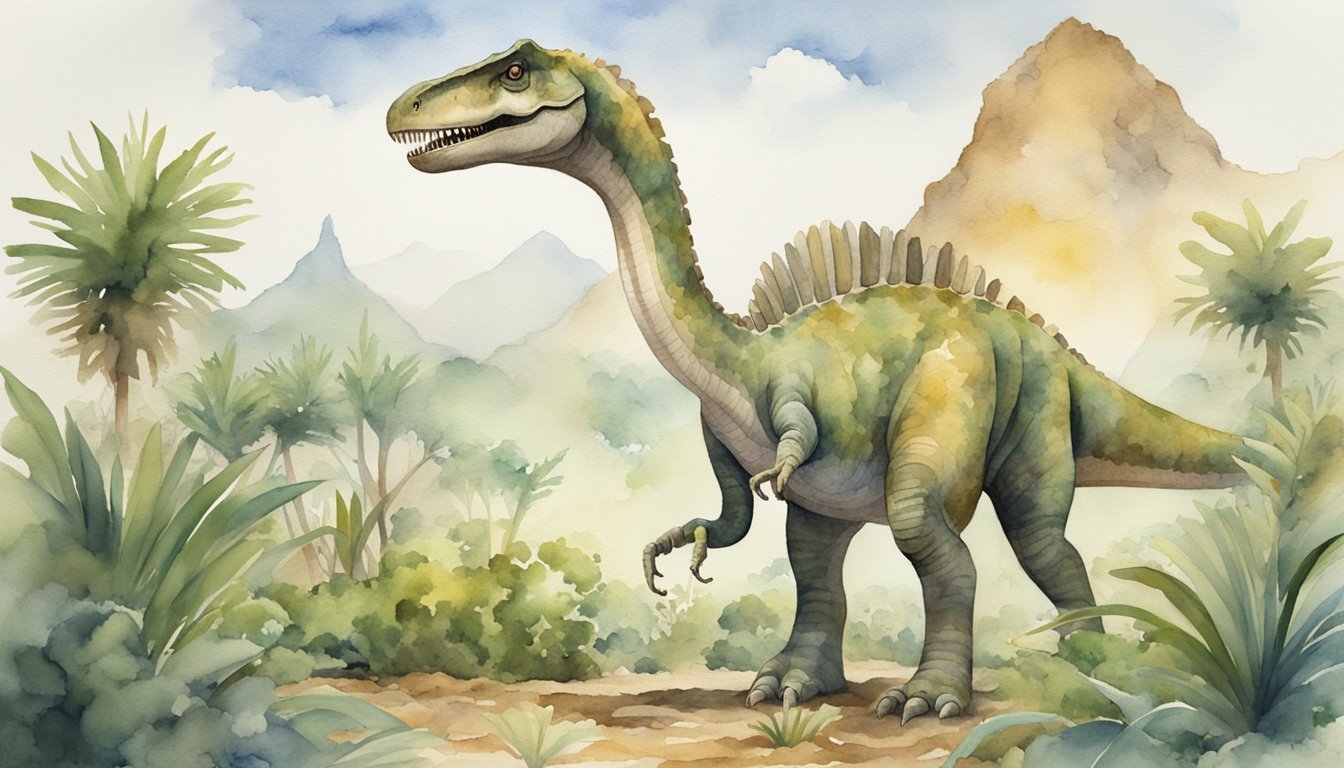Understanding Long-Necked Dinosaurs
Long-necked dinosaurs, or sauropods, were among the largest animals to ever roam the Earth. This section explores their unique characteristics, common species and habitats, dietary patterns, and the role of paleontology in uncovering their evolutionary journey.
Sauropod Characteristics
Sauropods were distinguished by their enormous size, long necks, and equally long tails. Their necks contained an extended series of cervical vertebrae, while their backbones were supported by sturdy ribs. Contrary to their massive bodies, sauropods had relatively small skulls. They were primarily herbivores, with their long necks allowing them to reach vegetation other species could not.
Common Species and Their Habitats
Notable sauropod dinosaurs such as the Apatosaurus, Brachiosaurus, and Diplodocus thrived in regions that are now known as North America, particularly within the fossil-rich Morrison Formation in Colorado and Wyoming. The Argentinosaurus roamed what is now Argentina in South America, while Mamenchisaurus, famous for the longest neck relative to body size, lived in Asia. Discoveries in the Tendaguru Formation in Tanzania and sites in India have also yielded significant sauropod fossils.
Diet and Behavior
As herbivores, the diet of sauropods consisted mostly of vegetation, which made them high browsers. They likely consumed copious amounts of plants daily to sustain their large size. Their herbivorous diet could have included leaves from tall trees, ferns, and other plants accessible with their lengthy necks. Their eating behavior may have played a role in shaping the prehistoric environment.
Fossil Discoveries and Paleontology
Paleontologists have unearthed sauropod fossils around the globe, contributing to our understanding of these colossal reptiles. The Journal of Systematic Palaeontology has published on species like the Mamenchisaurus, and significant finds such as fossilized skin have been uncovered in places like Sichuan, China. These discoveries provide insights into sauropod biology, behavior, and their place in the history of life on Earth.
Physical Adaptations and Evolution
Sauropods evolved to have hollowed out bones which, despite their size, reduced their overall weight. They possessed robust vertebrae and ribs to support their long necks and massive bodies. Their forelimbs were also adapted for supporting their weight, and some species like Brachiosaurus had longer front legs, giving their bodies a sloped appearance. These physical adaptations were crucial for sauropods to thrive for millions of years during the Late Jurassic to the Cretaceous period.
Cultural Impact and Scientific Significance

Long-necked dinosaurs, or sauropods, have left an indelible mark on both popular culture and the field of paleontology. Their massive size and unique morphologies continue to captivate the imagination and play a critical role in understanding prehistoric life.
Representation in Media and Culture
Sauropods like the Brachiosauridae and Diplodocidae have become pop culture icons, in part due to their prominent roles in films such as “Jurassic Park.” The portrayal of these dinosaurs has influenced the public’s perception of paleontology and prehistoric times. The fascination with sauropods extends beyond the silver screen, featuring in books, television, and artwork, often symbolizing the majesty and mystery of the Earth’s distant past.
Research and Museum Exhibits
Museums around the world, including the Carnegie Museum of Natural History, are home to extensive sauropod exhibits. Fossils like the Dreadnoughtus, notable for being among the largest terrestrial vertebrates ever discovered, and the remarkably complete sauropod skeleton of Diplodocus, are key attractions that fascinate and educate millions of visitors annually about the historic significance of these reptiles.
Extinction and the Cretaceous-Paleogene Event
The end of the Cretaceous period, marked by the Cretaceous-Paleogene extinction event, wiped out all non-avian dinosaurs, including sauropods. Paleontologists studying this period have found evidence that an asteroid impact was a major factor contributing to this mass extinction. The abrupt end of the dominant presence of sauropods left an evolutionary gap that provided opportunities for other life forms to emerge and diversify.
Comparisons and Analogies
Comparisons are often drawn between sauropods and modern-day giraffes, the tallest living land animals. However, the physiology and morphology of sauropods, such as their elongated necks, whiplike tails, and limb structures, were distinctively different from any creature alive today. Giraffes, despite having long necks, do not display the same degree of specialization seen in the sauropod clades like Brachiosauridae or Diplodocidae.
Key Discoveries and Specimen Studies
Discovering sauropod fossils, such as the large right femur or numerous caudal vertebrae, has helped paleontologists like those contributing to the Journal of Systematic Palaeontology uncover clues about their lives. Studies of sauropod fossils from the Late Jurassic, specifically from the Kimmeridgian and Tithonian stages, as well as specimens from locations in South America and Europe, have provided invaluable insights into their habitats, behaviors, and physiology.
Continued Research and Unanswered Questions
The field of sauropod research is incredibly dynamic, with ongoing studies delving into aspects such as sauropod ligaments, serrations on teeth, bone morphology, and reproductive biology, including the study of egg clutches. Despite the progress, many questions remain — from detailed aspects of sauropod posture and locomotion to broader issues concerning their social behavior and ecosystem impact in the Early Jurassic Epoch and beyond. Scientists continue to uncover fossils like those of the Shunosaurus and Omeisaurus, steadily piecing together the vast puzzle of sauropod life and evolution.

